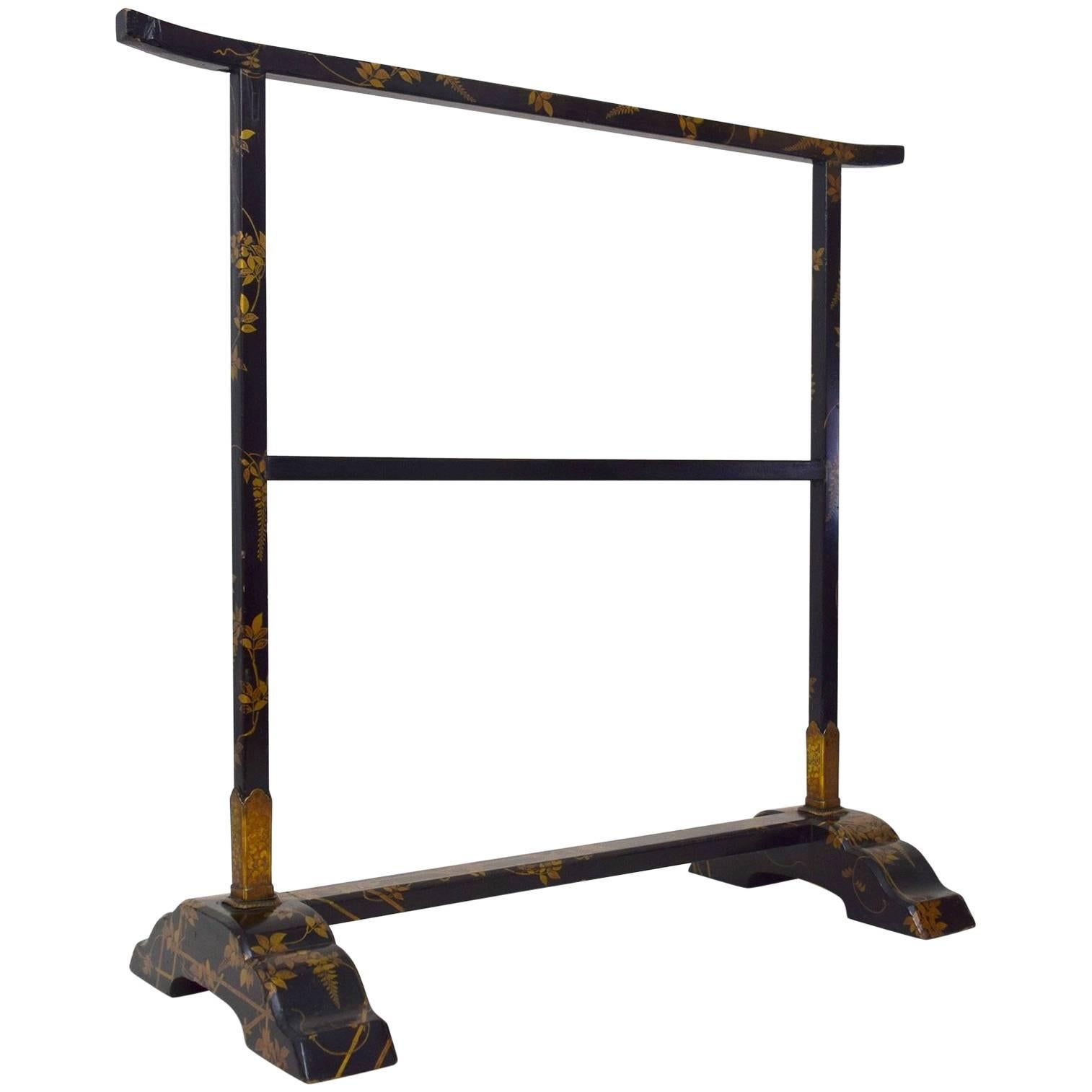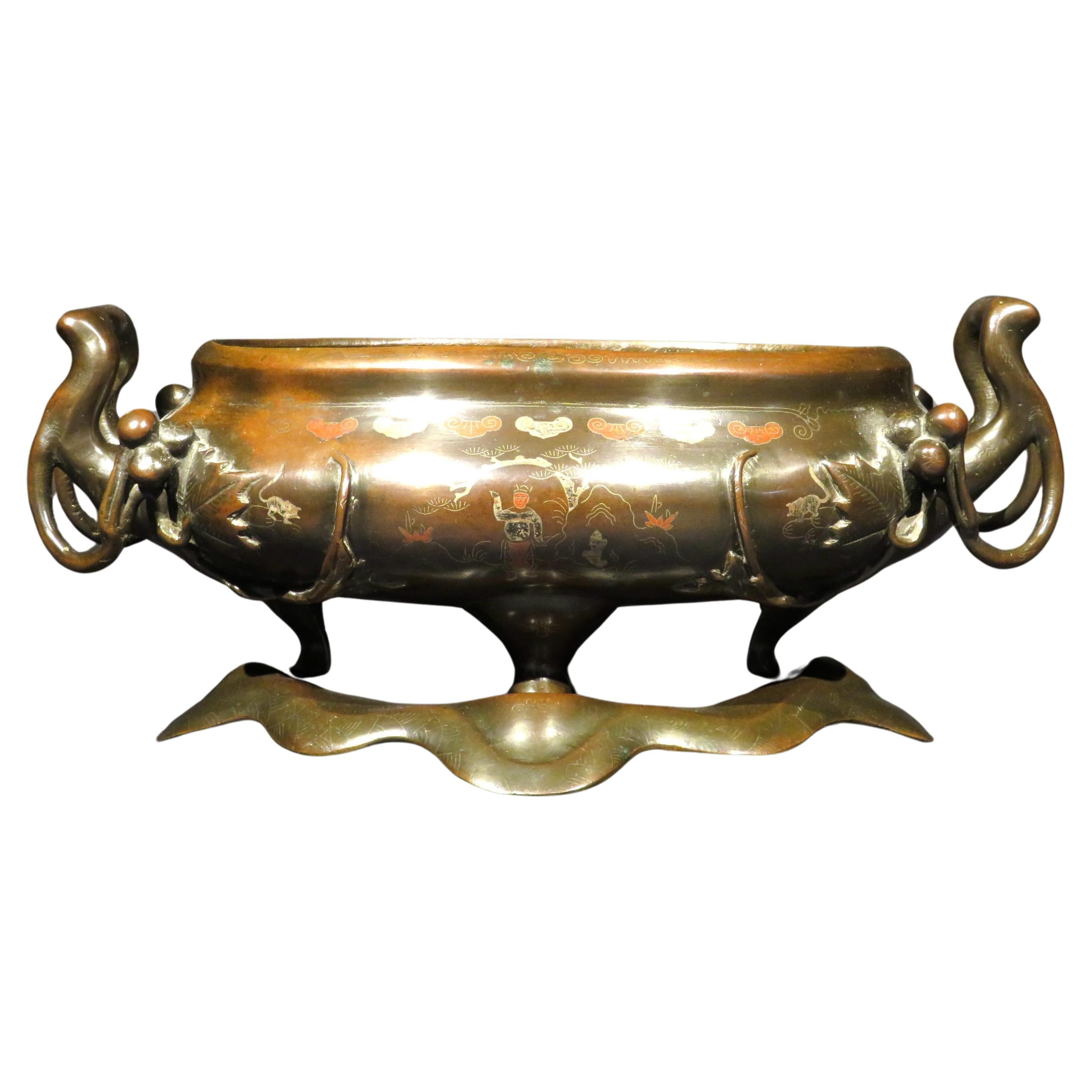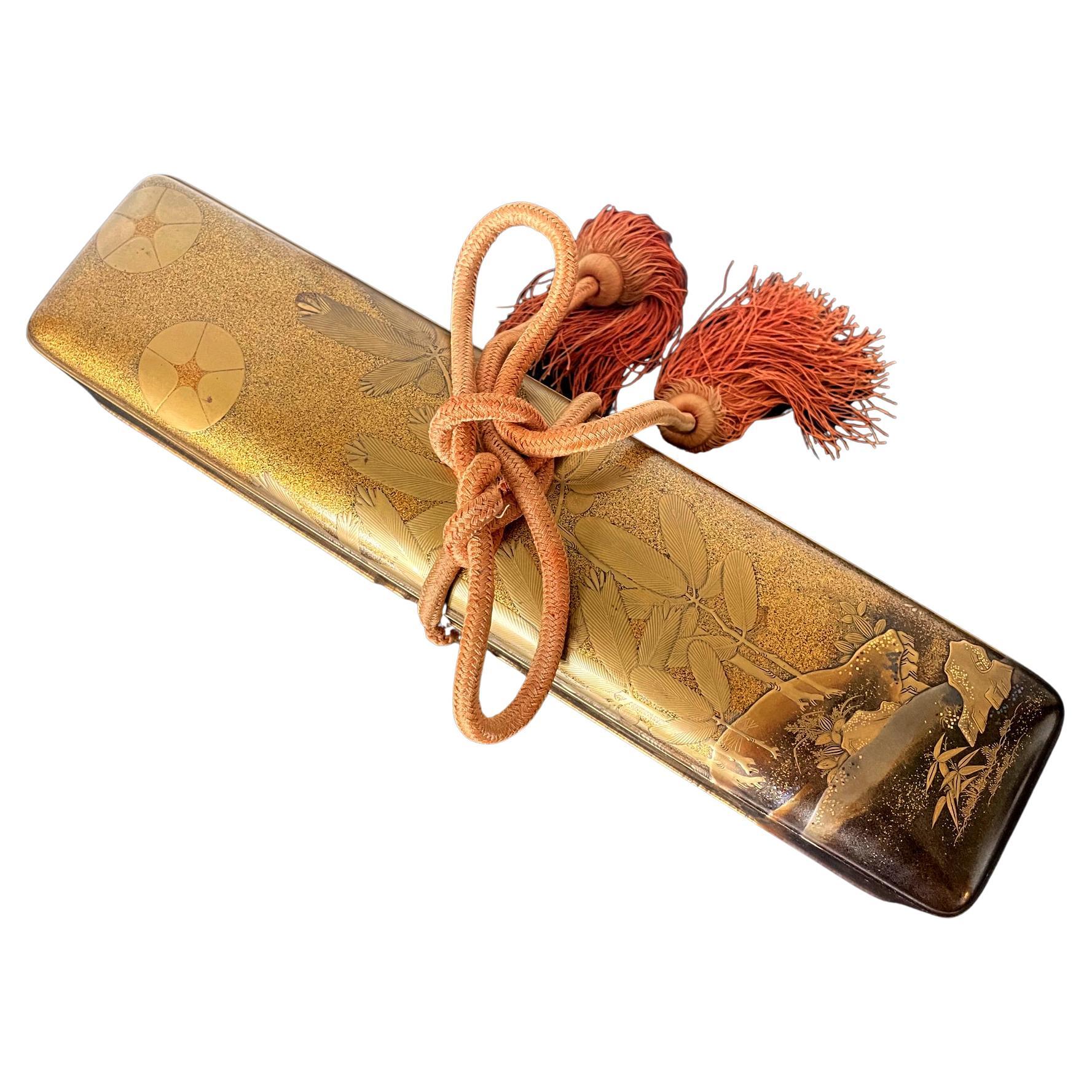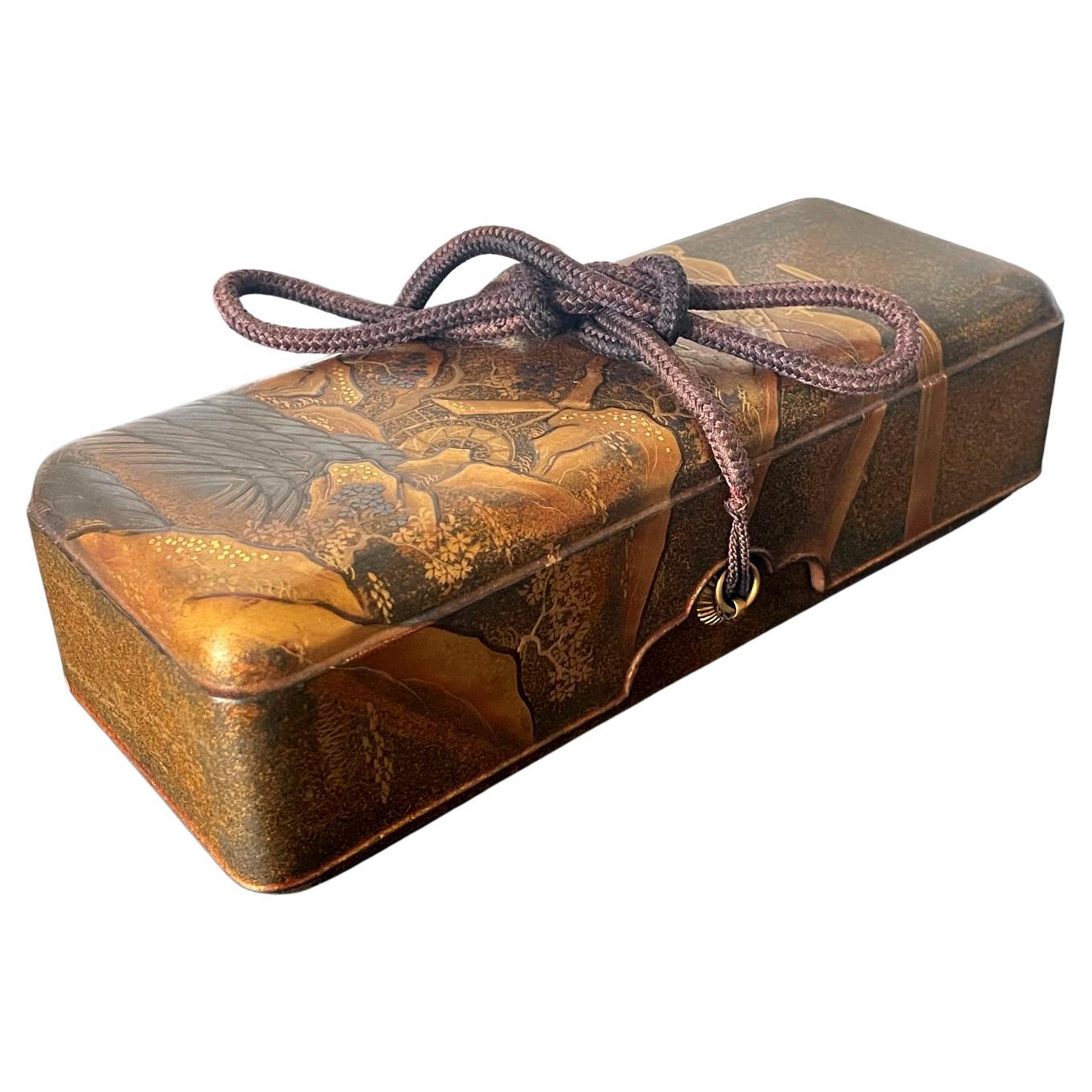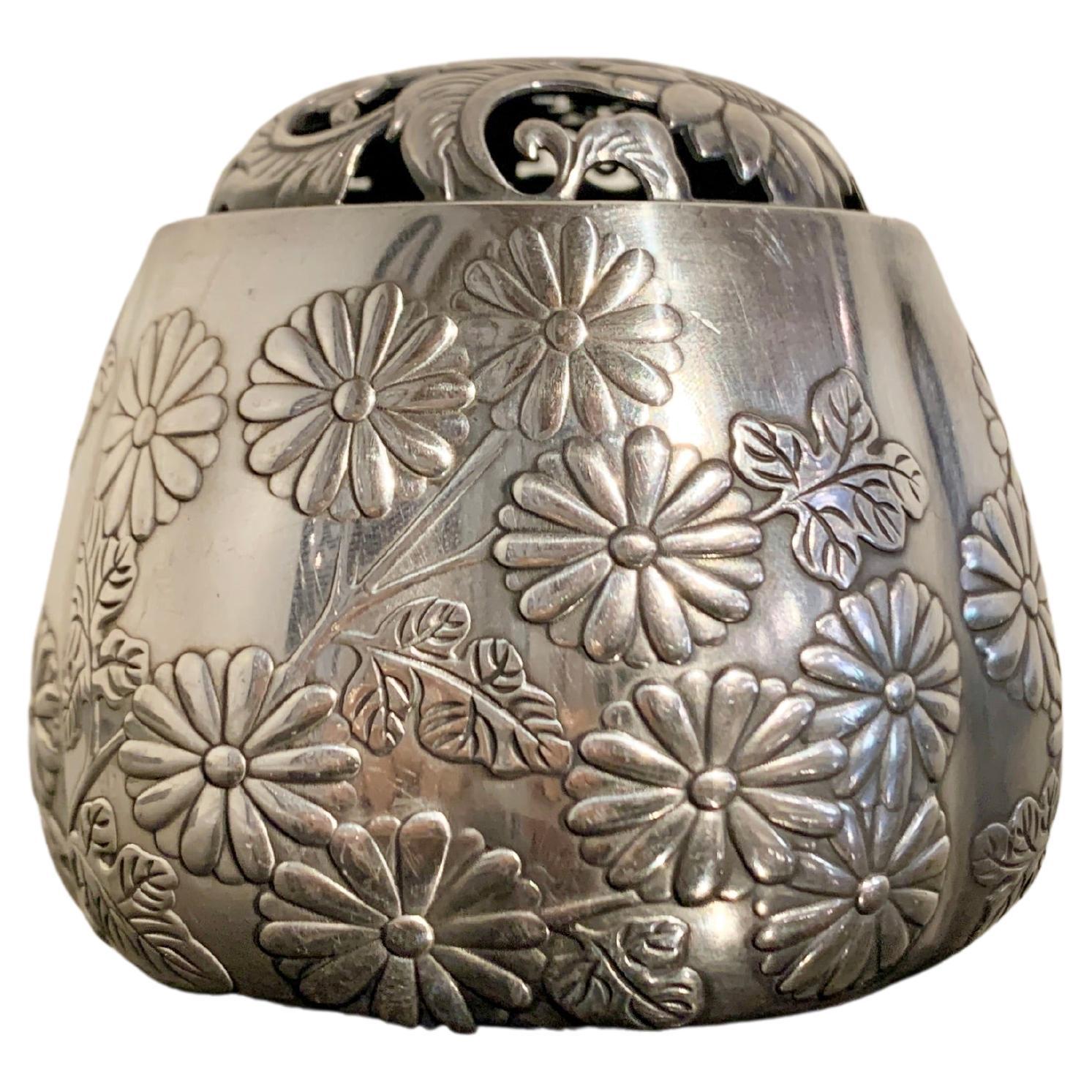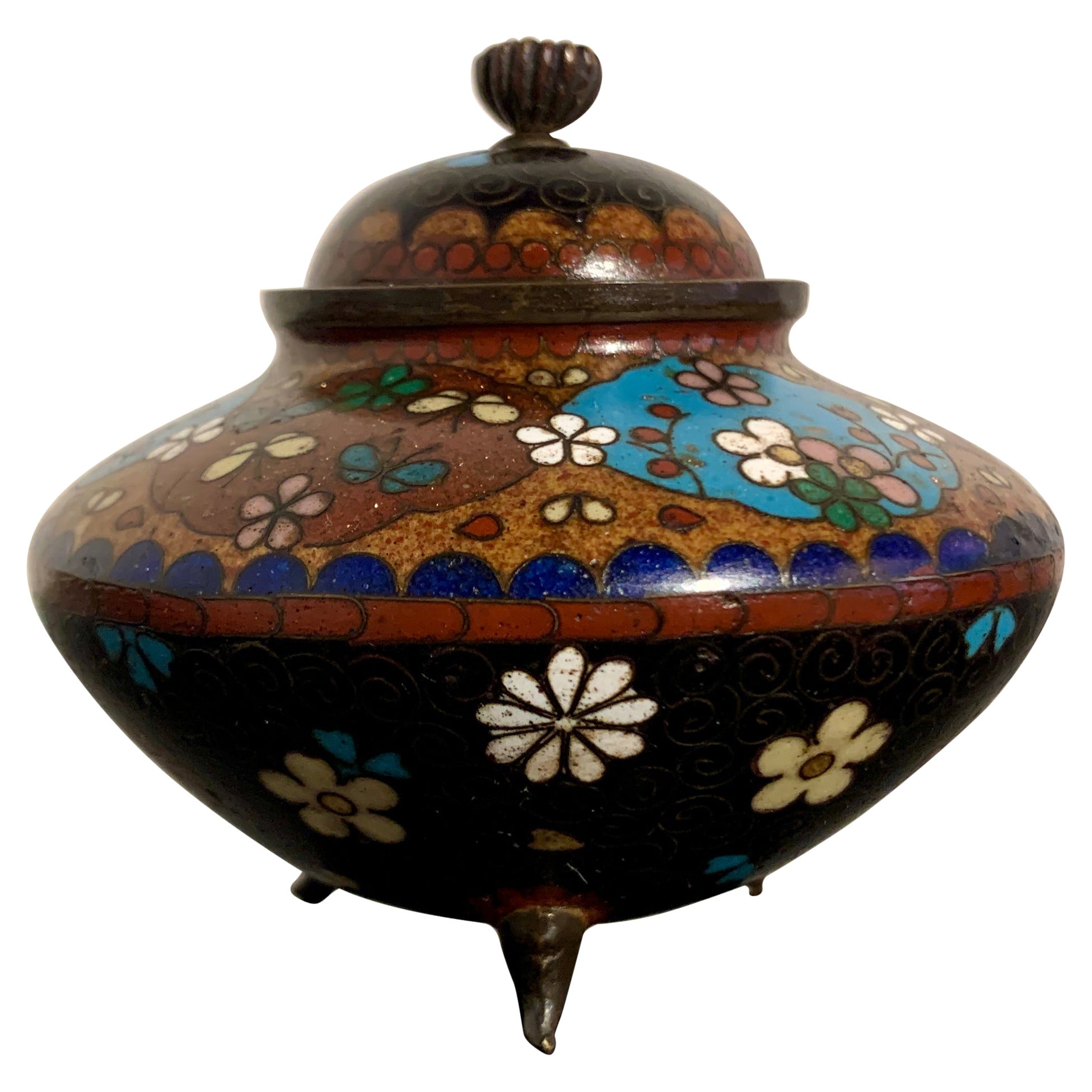Items Similar to Japanese Bronze Water Coupe, Eguchi as Fugen, Edo/Meiji Period, Japan
Want more images or videos?
Request additional images or videos from the seller
1 of 12
Japanese Bronze Water Coupe, Eguchi as Fugen, Edo/Meiji Period, Japan
About the Item
A very finely cast Japanese bronze water coupe in the form of the courtesan Eguchi riding an elephant, signed Kazutada, Edo to Meiji Period, mid 19th century, Japan.
The small and elegant bronze water coupe is exquisitely cast to depict a figure of a seated lady reading poetry upon the back of a large recumbent elephant. This image depicts the Courtesan of Eguchi as Fugen Bosatsu. A three character inscription to the base reading "Kazutada Saku" (made by Kazutada).
The elephant is portrayed in a recumbent position, its legs tucked under, and head and tail wrapped around its prodigious body, trunk extended. A coy smile dances across the beast's face, its eyes exuding intelligence and kindness. The underside of the toes are especially detailed.
The female figure seated upon the back of the elephant serves as the lid of the water coupe. She is seated in a relaxed pose, with one knee raised, and dressed in the robes of a courtesan, her long hair tied back. She reads a scroll of poetry. This figure can be identified as the Courtesan of Eguchi, a 12th century prostitute named Tae living in the town of Eguchi, who famously had a conversation with the traveling monk Saigyo after he had asked for lodging within her brothel.
In the Edo period, it was popular to conflate or parody Tae as Fugen Bosatsu (the Bodhisattva Samantabhadra, the Bodhisattva of Virtue). The seeminglyincongruous pairing of a prostitute and the Bodhisattva of Virtue served as a commentary on the nature of perception and reality, and the ideas of virtue and vice.
- Dimensions:Height: 3 in (7.62 cm)Width: 3.63 in (9.23 cm)Depth: 2.25 in (5.72 cm)
- Style:Meiji (Of the Period)
- Materials and Techniques:
- Place of Origin:
- Period:
- Date of Manufacture:mid 19th Century
- Condition:Wear consistent with age and use. Minor fading. In overall very good condition. With some minor wear and loss to the lacquer finish. Minor wear to the bronze. Some dirt and dust accretions to the recesses. Please see photos.
- Seller Location:Austin, TX
- Reference Number:1stDibs: LU894739168392
About the Seller
5.0
Platinum Seller
These expertly vetted sellers are 1stDibs' most experienced sellers and are rated highest by our customers.
Established in 2001
1stDibs seller since 2010
310 sales on 1stDibs
Typical response time: 1 hour
- ShippingRetrieving quote...Ships From: Austin, TX
- Return PolicyA return for this item may be initiated within 7 days of delivery.
More From This SellerView All
- Japanese Silver Incense Burner, Akoda Koro, by Nomura, Meiji Period, JapanLocated in Austin, TXA lovely and luxurious Japanese silver incense burner of lobed melon form, akoda koro, marked jungin and signed Nomura, Meiji Period, circa 1900, Japan. The silver koro...Category
Vintage 1910s Japanese Meiji Metalwork
MaterialsSilver, Sterling Silver
- Small Japanese Cloisonné Censer, Koro, Meiji Period, Late 19th Century, JapanLocated in Austin, TXA small and delightful Japanese cloisonné and goldstone tripod incense burner and cover, Meiji period, late 19th century, Japan. The small incense burner...Category
Antique Late 19th Century Japanese Meiji Metalwork
MaterialsCopper, Enamel
- Japanese Lacquer Hibachi with Imperial Chrysanthemum, Meiji Period, JapanLocated in Austin, TXA simple and elegant Japanese lacquer hibachi stand with imperial chrysanthemum mon and copper liner, now modified as an usubata, late Meiji Period, ci...Category
Antique Early 1900s Lacquer
MaterialsCopper
- Japanese Parcel Gilt Copper Hibachi, Edo Period, 18th Century, JapanLocated in Austin, TXA sublime Japanese parcel gilt copper hand warmer, hibachi, with chrysanthemum design, Edo Period, 18th century, Japan. The hand warmer, called a...Category
Antique 18th Century Japanese Edo Metalwork
MaterialsCopper
- Japanese Edo Period Lacquer and Mother-of-Pearl Embellished Stoneware KoroLocated in Austin, TXA highly unusual Japanese crackle glazed koro (incense burner or censer), lacquered and inlaid with mother-of-pearl embellishment, signed Gyokusen, Ed...Category
Antique 19th Century Japanese Edo Scholar's Objects
MaterialsCopper
- Japanese Kutani Treasure Boat 'Takarabune' Censer, Taisho Period, JapanLocated in Austin, TXA wonderful Japanese Kutani porcelain incense burner, koro, in the form of a treasure ship, Takarabune, Taisho Period (1912 - 1926), Japan. The censer boldly modeled as the legendary Takarabune, or Treasure Ship, a mythical ship said to carry the shichifukujin, the Seven Lucky Gods, around the heavens during the first days of the New Year, visiting lucky humans to bring blessings and prosperity. The black bodied, single mast ship sails on the water, its sail full of wind and decorated with the character "takara", meaning treasure. The pierced top of the ship serving as the cover for the censer. It is loaded with magical items and treasure, most prominently, a large coral branch...Category
Vintage 1910s Ceramics
MaterialsPorcelain
You May Also Like
- Elegant Japanese Edo Period RackLocated in New York, NYThis refined object dates to the first half of the 19th century, and was probably used for obi, kimono sashes, which were hung over it. The gold decorations on the black-lacquered g...Category
Antique 1830s Japanese Edo Lacquer
MaterialsLacquer
- A Very Fine Japanese Mixed Metal Bronze Doban / Suiban, Meiji Period (1868-1912)Located in Ottawa, OntarioDoban are traditional Japanese bronze vessels used to display scholarly objects known as ‘Suiseki’ (water stones), whereas a Suiban is a traditi...Category
Early 20th Century Japanese Meiji Scholar's Objects
MaterialsBronze
- Japanese Lacquered Gold Maki-E Naga Fubako Meiji PeriodLocated in Atlanta, GAA Japanese lacquered wood Naga Fubako (a long box used to store document or large scroll painting), circa 19th century Meiji period. The rectangular box features an unusually deep lipped lid with slightly rounded corners, a conforming lower box with bronze medallion rings with tasseled...Category
Antique 19th Century Japanese Meiji Lacquer
MaterialsWood, Lacquer
- Japanese Lacquered Maki-e Fubako Edo PeriodLocated in Atlanta, GAA Japanese lacquered wood fubako (a box used to store document or small scroll painting), circa second half of 19th century late Edo period. The rectangular box features an unusually deep lipped lid with slightly rounded corners, a conforming lower box that is almost entirely covered by the lid which has two bronze medallion rings with tasseled...Category
Antique 19th Century Japanese Edo Lacquer
MaterialsWood, Lacquer
- Rare Japanese Traveling Cabinet Oi Edo PeriodLocated in Atlanta, GAServed as a traveling cabinet as well as a shrine and carried like a backpack for the Buddhist priests and monks during long pilgrimage, this rare chest is known as Oi Japanese. In China the carrier case is known as Ji, traditionally used by the traveling scholars or monks in the ancient time to carry their belongings such as books, clothes, and stationary. The piece on offer here is of Japanese origin and dated to Edo period (circa 17-18th century), possibly older to 16th century of Momoyama or Muromachi period. It was likely reserved for the use of a high-rank priest to carry the Buddhism scripts based on its luxurious high quality. The wood frame takes the shape of a pagoda with carved bamboo design that features upturned corner cornices...Category
Antique 18th Century Japanese Edo Scholar's Objects
MaterialsSilk, Bamboo, Wood, Lacquer, Paper
- Lovely Antique Meiji Period Japanese Koro Bronze Cloisonne, 19th CenturyLocated in Amsterdam, Noord HollandLovely and beautifully made piece. Provenance: Originally part of the Catherina collection of Japanese bronzes and cloisonne that was partly auctioned in Amsterdam in 2006 at Sothe...Category
Antique 19th Century Japanese Scholar's Objects
MaterialsBronze
Recently Viewed
View AllMore Ways To Browse
Bronze Water
Bronze Watering
Water Dress
Antique Water Can
Antique Water Cans
Antique Watering Can
Antique Watering Cans
Antique Dress Form
Antique Dress Forms
Watering Can Mid Century
Antique Tie Back
Antique Beast
Asian Lady
19th Century Japanese Figure
Antique Vice
Used Recumbent
Asian Bronze Face
Asian Female Figure
